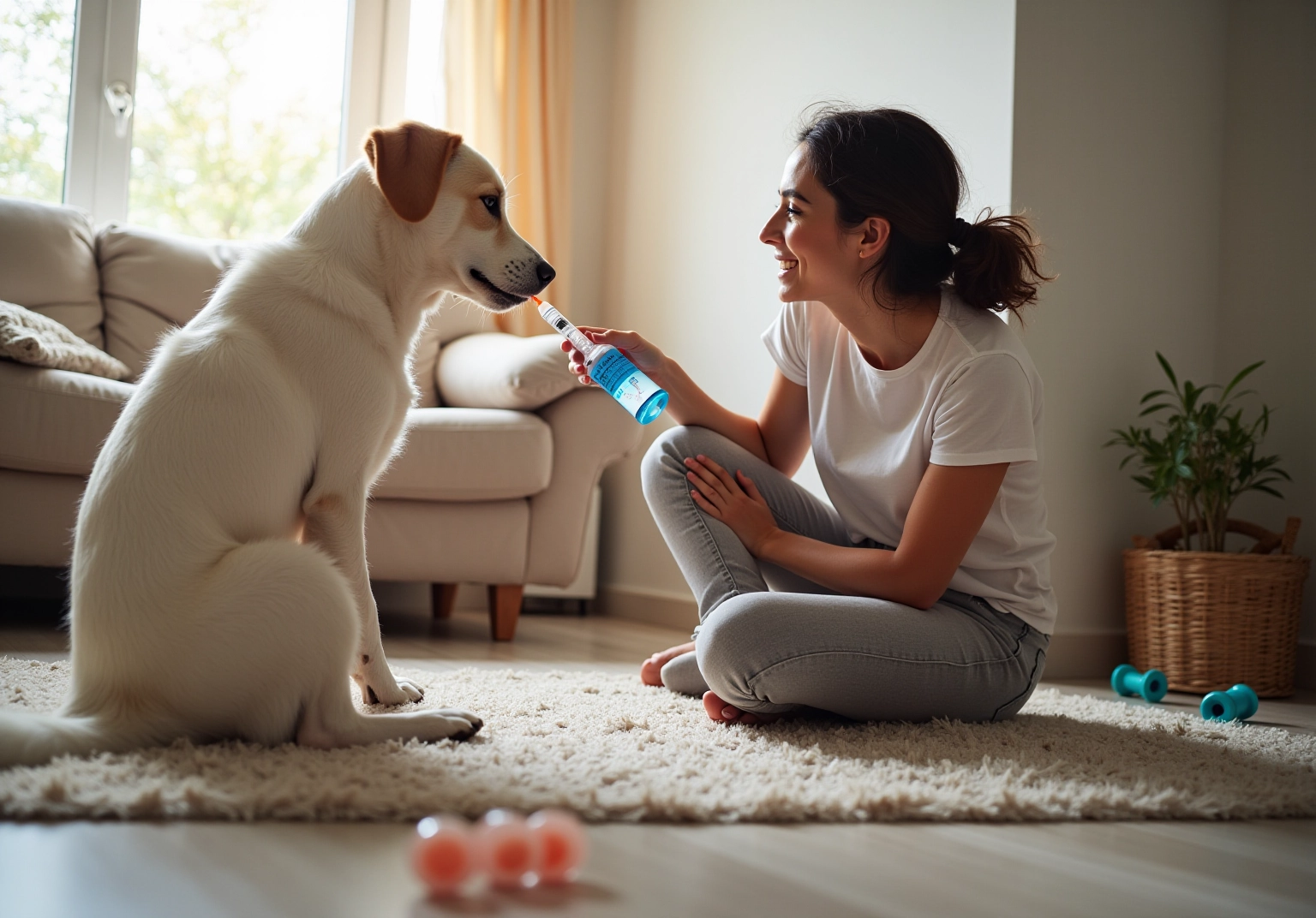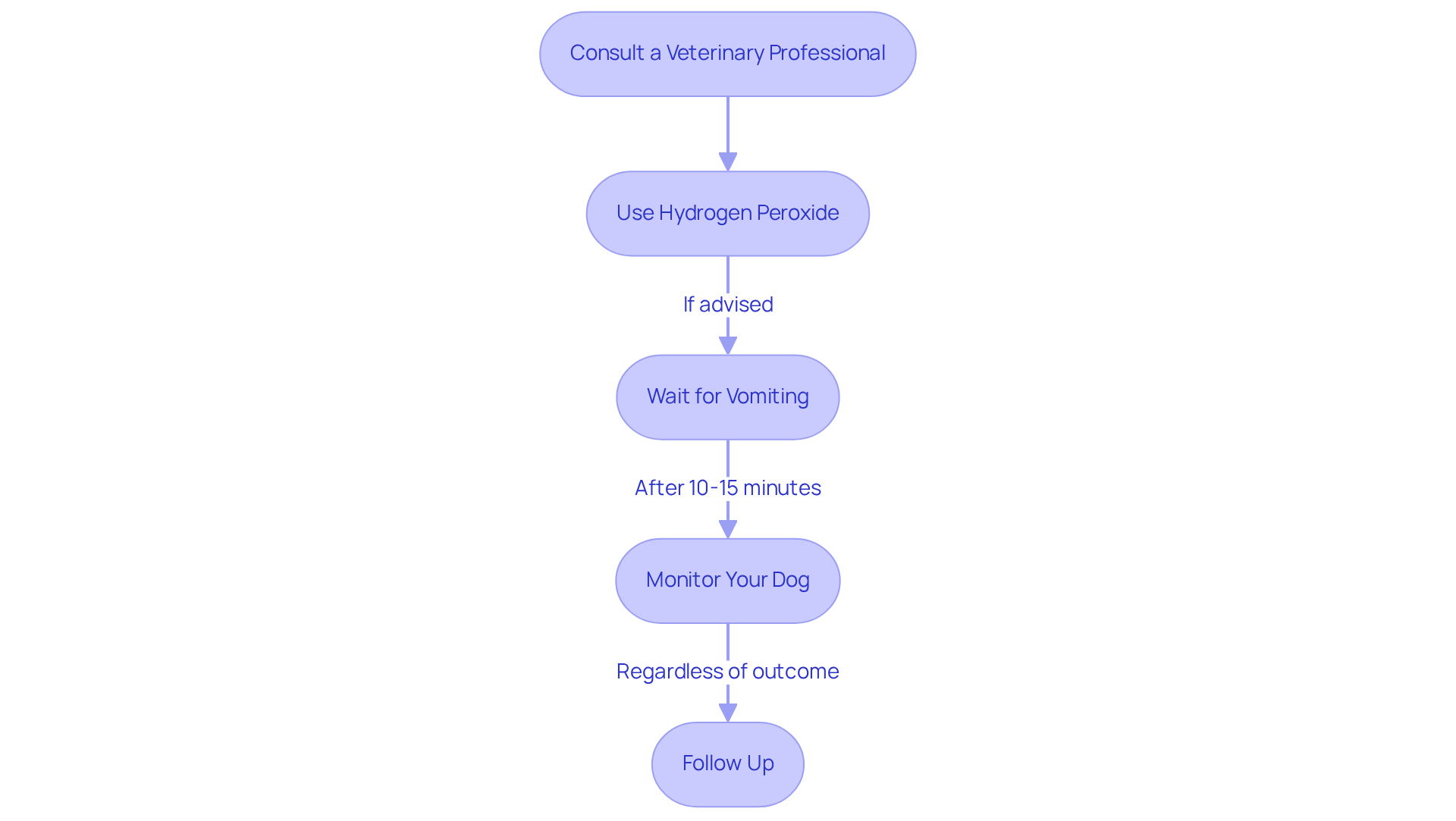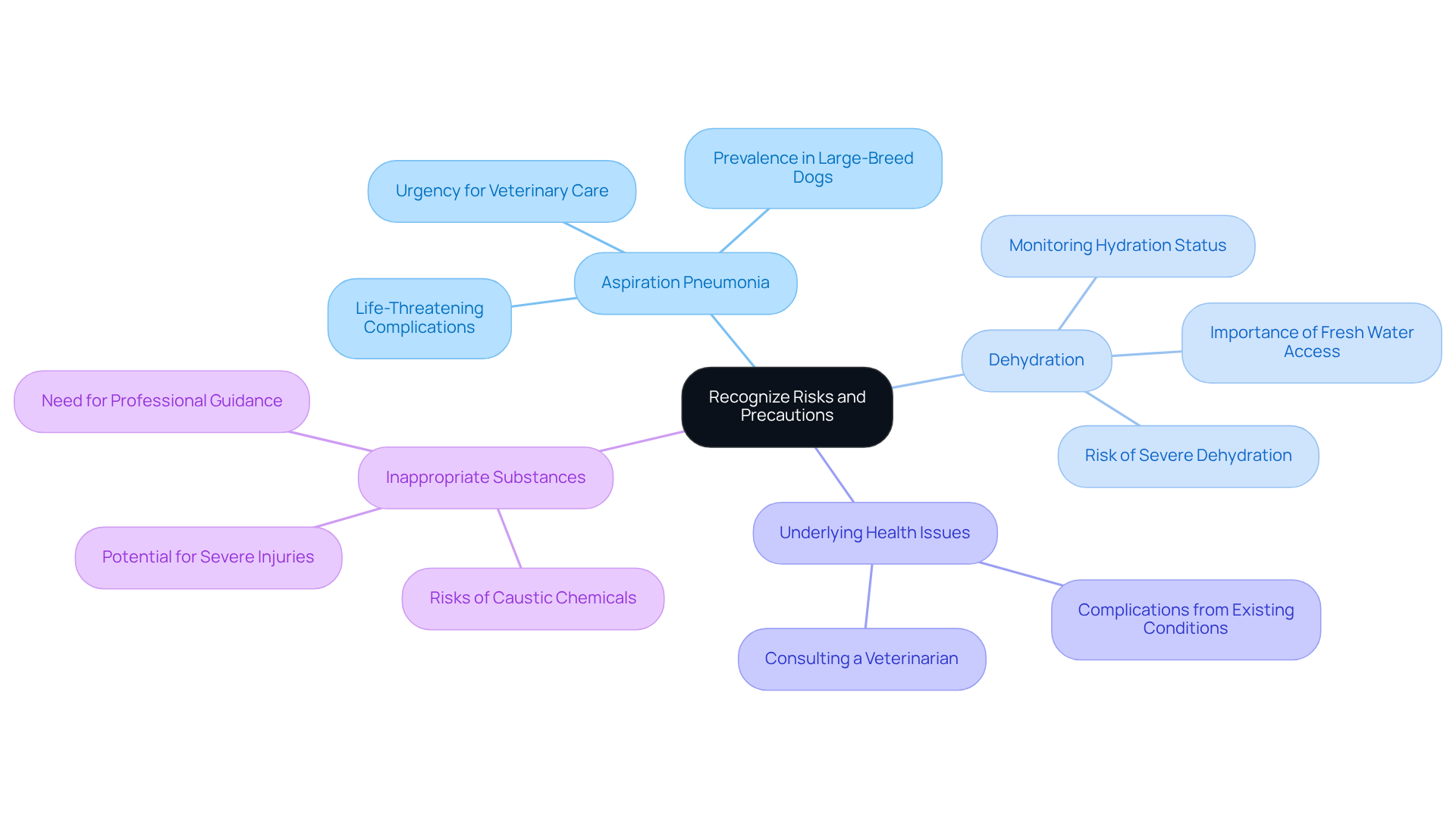
How to Induce Vomiting in Dogs: Safe Methods and Precautions
Overview
Inducing vomiting in dogs can be a distressing situation for any pet owner, and it’s essential to approach it with care. This action should only be considered in specific circumstances, such as when a dog has ingested a toxic substance. Before taking any steps, it’s crucial to consult a veterinarian, who can provide the necessary guidance.
Understanding the potential risks, such as aspiration pneumonia and dehydration, is vital for ensuring your dog’s safety and well-being during this process. Your concern for your pet’s health is valid, and seeking professional advice can help you navigate this challenging situation with confidence and compassion.
Introduction
Understanding how to induce vomiting in dogs is an essential skill for pet owners, particularly during emergencies involving toxic substances. We recognize that facing such situations can be incredibly stressful and frightening. This guide provides vital insights into safe methods and necessary precautions, empowering dog owners to make informed decisions when confronted with potentially life-threatening circumstances.
Yet, with the stakes so high, what should you consider before taking action? It’s crucial to find the right balance between urgency and safety, raising important questions about the risks involved and the best course of action for your beloved pet’s health.
Remember, you are not alone in this; we are here to help you navigate these challenging moments with care and understanding.
Understand When to Induce Vomiting in Dogs
It is important to understand how to induce vomiting in dogs, as this is a delicate matter that should only be considered in specific situations, particularly when a dog has ingested something harmful or a foreign object. It’s important to approach this with care and understanding.
If your dog has consumed a toxic substance—like chocolate, certain plants, or household chemicals—it’s important to know how to induce vomiting in dogs. The Pet Poison Helpline reports that ninety-five percent of their calls regarding chocolate toxicity come from concerned dog owners. Before taking any action, please consult your veterinarian or a pet poison control hotline for guidance on how to induce vomiting in dogs to ensure the safety and appropriateness of your response.
Time is of the essence. The effectiveness of inducing emesis decreases significantly after two hours post-ingestion. If more time has elapsed, the harmful substance may have already moved into the intestines, reducing the chances that expulsion will eliminate the toxin.
Certain health conditions in dogs, such as seizures, respiratory issues, or a history of aspiration pneumonia, complicate the decision to induce regurgitation. It’s crucial to seek veterinary advice in these cases to prevent worsening any underlying health issues.
Additionally, age and size matter. Puppies and smaller breeds are more vulnerable to complications from regurgitation. Before making the decision on how to induce vomiting in dogs, it is important to thoroughly evaluate your dog’s age and size, as these factors can significantly influence the risk of adverse effects.
As veterinary nurse Madeline Pike wisely states, “There are many foods and substances that are harmful to animals, and it is important for owners to educate themselves and those around them about these.” By understanding these vital factors, you can make an informed and compassionate choice about whether to induce regurgitation in your dog, prioritizing their safety and well-being. Remember, treatment costs for chocolate ingestion can range from $250 to over $2,000, underscoring the importance of prompt action in these critical situations.

Learn Safe Methods to Induce Vomiting
When it comes to your beloved dog’s health, it’s natural to feel anxious if you suspect they’ve ingested something harmful. To safely induce vomiting, please follow these compassionate guidelines:
- Consult a Veterinary Professional: Your first step should always be to reach out to your veterinarian or a pet poison control center. They can offer personalized guidance based on what your dog has ingested, ensuring their safety and well-being.
- Use Hydrogen Peroxide: If a veterinarian advises you to proceed, you may use 3% hydrogen peroxide:
- Administer 1 teaspoon (5 ml) for every 10 pounds of your dog’s weight, with a maximum limit of 3 tablespoons (45 ml) for larger dogs.
- Use a syringe or dropper to gently deliver it into your dog’s mouth, making the process as stress-free as possible.
- Wait for Vomiting: After giving the hydrogen peroxide, patiently wait for about 10-15 minutes. If your dog hasn’t vomited, a second dose may be administered, but please do not exceed two doses without consulting your veterinarian.
- Monitor Your Dog: It’s crucial to keep a close eye on your furry friend during this time. If vomiting doesn’t occur or if your dog appears uncomfortable, contact your veterinarian right away. Monitoring is vital, especially since inducing vomiting in pets already showing signs of intoxication, such as regurgitation or changes in their central nervous system, can be harmful.
- Follow Up: Regardless of the outcome, it’s important to follow up with your veterinarian to ensure your dog receives the necessary care and monitoring after the incident.
These steps can help you safely assist your dog in expelling harmful substances when necessary, including how to induce vomiting in dogs, as hydrogen peroxide has a success rate of around 90%. However, your pet’s safety should always come first, so prioritize veterinary advice to minimize risks associated with potential adverse effects, which have been noted in 14% of cases, typically presenting as mild symptoms. Moreover, inducing vomiting is not advisable for corrosive substances, and if your dog hasn’t eaten recently, offering a small meal before attempting to induce vomiting can enhance the chances of effectively addressing the toxic ingestion.

Recognize Risks and Precautions
Understanding how to induce vomiting in dogs can help pet owners navigate a distressing situation while being aware of the significant risks involved to ensure their furry friend’s safety.
-
Aspiration Pneumonia is a serious concern that arises when a dog vomits and inhales the vomit into their lungs, leading to potentially life-threatening complications. This condition can result in severe respiratory issues and necessitates immediate veterinary care. It’s particularly prevalent in large-breed dogs, which underscores the need for vigilance during such moments. Dr. Veronica Higgs reminds us that “aspiration pneumonia can be life-threatening, especially in brachycephalic breeds, which are at higher risk for inhaling vomit.” This insight highlights the urgency of being cautious in these situations.
-
Dehydration is another risk that can quickly emerge from vomiting, especially in dogs that are already stressed or unwell. Research indicates that up to 20% of dogs may experience significant dehydration following vomiting episodes. Ensuring your dog has access to fresh water afterward is crucial. Monitoring their hydration status is essential, as severe dehydration can worsen existing health issues and lead to further complications.
-
For dogs with underlying health issues, the risks associated with induced vomiting can be heightened. Conditions such as heart disease or respiratory problems may complicate recovery. Consulting a veterinarian before taking action is vital to avoid exacerbating any pre-existing conditions, ensuring your pet receives the best care possible.
-
Moreover, it’s essential to be cautious about inappropriate substances. Certain items, like caustic chemicals or sharp objects, should never be vomited. In these cases, knowing how to induce vomiting in dogs can lead to more harm than good, potentially causing severe injuries or complications. For instance, a case study revealed a dog that ingested a caustic cleaner and suffered significant esophageal damage after vomiting was induced. Identifying the ingested substance and seeking professional guidance is crucial before proceeding.
By recognizing these risks and taking appropriate precautions, pet owners can better ensure the safety and well-being of their dogs during these challenging situations. Remember, you are not alone in this journey; seeking support and professional advice can make all the difference in safeguarding your beloved pet’s health.

Conclusion
Understanding how to induce vomiting in dogs is not just a skill; it’s a vital lifeline for pet owners facing the distressing reality of toxic ingestion emergencies. It’s essential to approach this situation with care and to seek professional guidance before taking any action. Inducing vomiting should be reserved for specific circumstances, always with a clear awareness of the potential risks involved.
The urgency of the situation cannot be overstated, as effective intervention is time-sensitive, especially within two hours of ingestion. It’s heartening to know that there are safe methods available, such as consulting a veterinarian and using hydrogen peroxide under their expert guidance. However, it’s crucial to acknowledge the significant risks associated with inducing vomiting, including aspiration pneumonia and dehydration, particularly in dogs with pre-existing health issues or those who have ingested harmful substances.
Ultimately, the health and safety of our beloved pets must always come first. As caring pet owners, we are encouraged to educate ourselves about the risks and safe practices for inducing vomiting in dogs. By prioritizing veterinary advice and taking the necessary precautions, we can protect our furry companions and respond decisively when faced with potential emergencies. In moments of uncertainty, remember that reaching out to a professional is not just a recommendation; it’s the best course of action to ensure the well-being of your cherished pet.
